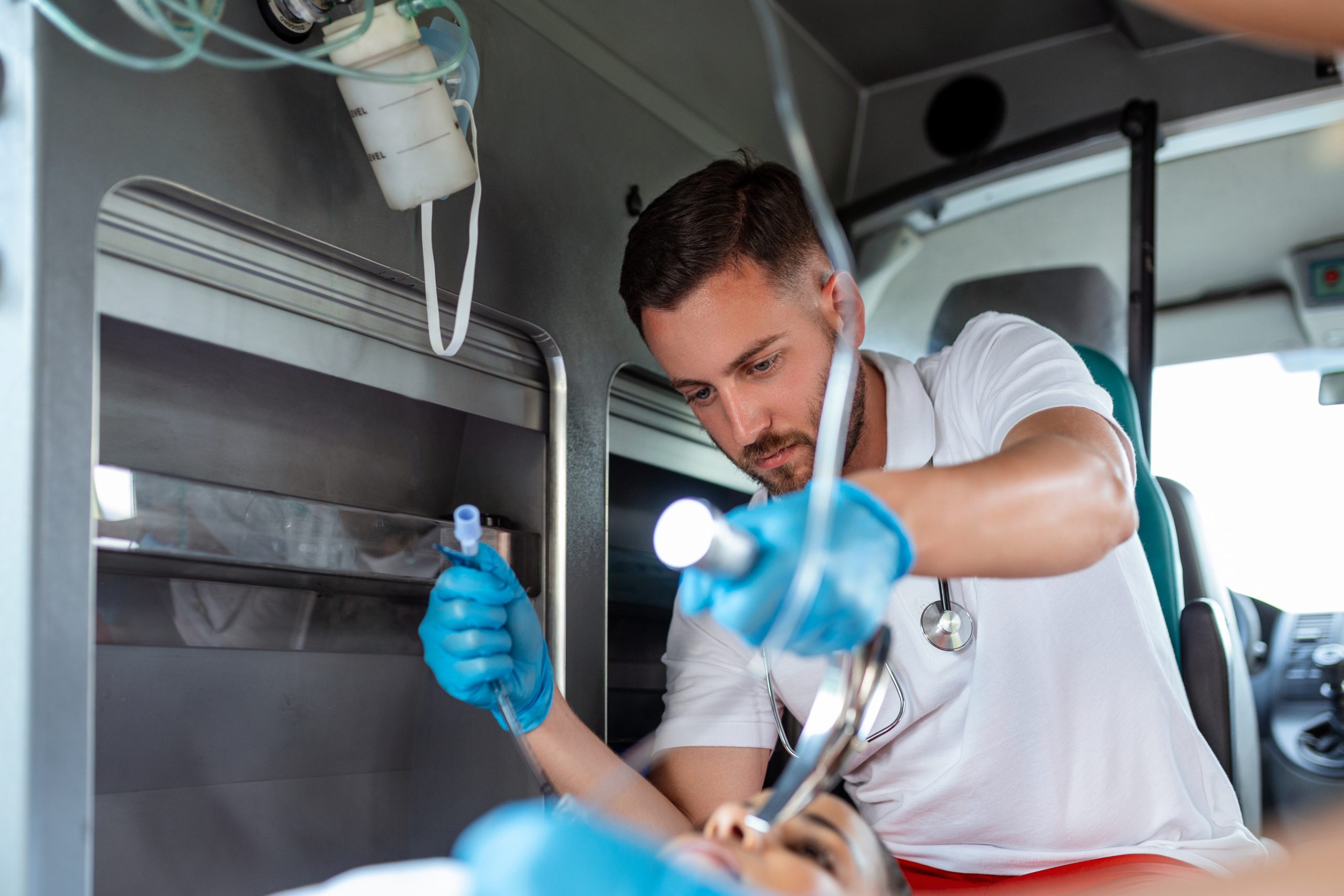

A study led by Vanderbilt University Medical Center compared the two types of laryngoscopes used in tracheal intubation of critically ill patients and found that using a video laryngoscope increased successful intubation on the first attempt when compared to using a direct laryngoscope, which had been the standard approach for nearly a century.
The DEVICE (DirEct Versus VIdeo LaryngosCopE) experiment, which was published today in the New England Journal of Medicine, evaluated two devices used to intubate patients in the ED and ICU: a direct laryngoscope and a video laryngoscope.
Tracheal intubation has been performed for nearly a century using a direct laryngoscope, a simple instrument consisting of a handle and a blade with a light. However, video laryngoscopes have become more popular in the last 20 years. To better sight of the voice cords, the device features a camera near the tip of the blade. A clinician uses a video laryngoscope to view the endotracheal tube placement on a screen.
“More than 1.5 million critically ill adults undergo tracheal intubation outside of an operating room in the U.S. each year, and about 80% of those are with a direct laryngoscope because the video devices are more expensive,” said Matthew Semler, MD, MSc, assistant professor of Medicine in the Division of Allergy, Pulmonary and Critical Care Medicine, and co-senior author of the study, along with Jonathan Casey, MD, assistant professor of Medicine.
“Without evidence to tell us whether the video laryngoscope is worth the additional cost, their uptake into practice has been incomplete,” he said.
“In the ED and ICU failure to intubate the trachea on the first attempt occurs about 20-30% of the time, leading to an increased risk of life-threatening complications, such as low oxygen levels in the blood, changes in blood pressure, cardiac arrest, even death,” Semler said.
“But until now, there hasn’t been definitive data to tell us whether a video laryngoscope is better than a direct laryngoscope for intubation of critically ill adults. Although video laryngoscopes are known to improve view, it has been unclear until now if they improve the ease with which a tube is passed. A few small and conflicting studies have been published, and the lack of definitive evidence has slowed adoption.”
“Even in places where both devices are available, including at Vanderbilt, many physicians have believed they were equivalent and use of a direct laryngoscope remains common,” Semler said.
The study enrolled 1,417 patients from 17 emergency departments and intensive care units in 11 hospitals across the country. The main question was whether one device is superior to another for correctly inserting the breathing tube on the first try.
“In our randomized trial successful intubation on the first attempt occurred in 71% of patients in the direct laryngoscope group and 85% of patients in the video laryngoscope group, a 14% absolute increase,” said Matthew Prekker, MD, MPH, assistant professor of Emergency Medicine and Internal Medicine at Hennepin County Medical Center and first author of the study.
The research group also looked at a secondary outcome—complications.
“Other complications, such as cardiac arrest, occur more frequently when a breathing tube is not successfully placed on the first try,” Casey explained. “We hope that using a video laryngoscope will help prevent these rare but important events, but proving this would require a larger trial.”
“What we learned from this trial is that, in the future, the really significant difference in placing a breathing tube on the first attempt is enough to make the video laryngoscope the first-line device for intubating critically ill adults in the ED and ICU.”
According to Semler, the study also demonstrates that the video laryngoscope appears to be especially useful for less experienced clinicians.
“Some tracheal intubations are done by anesthesiologists who have intubated thousands of patients over their lifetime, but many in the ED and ICU are done by physicians who have less overall experience intubating. The video laryngoscope appears to be especially helpful when the person performing the intubation is less experienced. It basically doubles the chances of putting a breathing tube in successfully on the first try, probably because of the ability to very clearly see the vocal cords.”
More research is needed, according to Semler, to compare the two types of video laryngoscopes—one fashioned like a direct laryngoscope and the other hyperangulated with a curved blade.
“Now that we know we should be using the video laryngoscope, the next logical question is which type. We hope that future research can answer that question.”
more recommended stories
 36-Week Pre-eclampsia Screening May Reduce Term Risk
36-Week Pre-eclampsia Screening May Reduce Term RiskA New Preventive Strategy for Term.
 Cardiovascular Risk and Sudden Cardiac Death in Diabetes
Cardiovascular Risk and Sudden Cardiac Death in DiabetesRising Sudden Cardiac Death (SCD) Risk.
 Poor Kidney Function and Alzheimer’s Biomarkers Explained
Poor Kidney Function and Alzheimer’s Biomarkers ExplainedPoor kidney function may influence levels.
 Walking Speed Before Hip Replacement Predicts Recovery
Walking Speed Before Hip Replacement Predicts RecoveryNew Evidence Points to a Simple,.
 Neuroblastoma Drug Combo Extends Survival in Models
Neuroblastoma Drug Combo Extends Survival in ModelsA Promising Shift in High-Risk Neuroblastoma.
 How Soybean Oil Impacts Weight Gain and Metabolism
How Soybean Oil Impacts Weight Gain and MetabolismWhy Soybean Oil May Affect Metabolism.
 Coffee and Cognitive Function: Evidence Review
Coffee and Cognitive Function: Evidence ReviewA new narrative review in Cureus.
 Colorectal Cancer Screening Rates Low in Adults 45–49
Colorectal Cancer Screening Rates Low in Adults 45–49Recent UCLA research reveals that colorectal.
 Gut Immune Cells and Long-Lasting Antiviral Protection.
Gut Immune Cells and Long-Lasting Antiviral Protection.Breakthrough Findings on How Gut Immune.
 Mild Pancreatic Duct Dilatation Signals Higher Cancer Risk
Mild Pancreatic Duct Dilatation Signals Higher Cancer RiskEarly Structural Changes Offer Critical Clues.

Leave a Comment